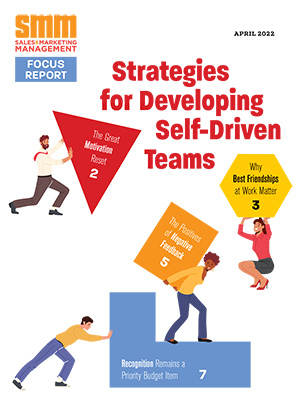Build a better mousetrap, Emerson once wrote, and the world will beat a path to your door. But while no one’s disputing Emerson’s contribution to literature, the practicality of his advice in the context of today’s business markets is another matter.
Even if Emerson could successfully build a better mousetrap today, would he know how to bring it to market? And if catching mice was already being handled by current technology, would the market even care?
New product development is a high-stakes game that can catapult a company into riches…or plunge it into bankruptcy within a short period of time. Studies by the Conference Board and other research organizations reveal approximately one-third of all new products introduced to the marketplace are failures.
When you include all of the new product concepts that never made it to the commercialization stage, this success rate drops even lower. Realistically, I would estimate only one out of every seven new product ideas succeeds.
More Mousetrap Fallacies
Most of the small and mid-size manufacturers I know still want to believe you can invent a better mousetrap and riches will follow. They’re enamored with the Apple computer stories—tales of garage inventors who made it big.
The myth of inventing new mousetraps is a particular problem for SMMs and entrepreneurial inventors who are technically oriented. This approach appeals to their technical, creative, and entrepreneurial needs, and may be the reason why they started their business in the first place.
No question, inventing new mousetraps is truly the fun part of manufacturing. But instead of looking at it from the perspective of the mouse or the mousetrap inventor, let’s look at it from the all-important perspective of the thing you need to make it work: the cheese (or in this case, the money you’ll need).
Why New Products Fail
A study by Robert Cooper entitled “Why New Industrial Products Failed,” analyzed 150 industrial product firms of all sizes. Cooper discovered most (though not all) of the reasons for new product failures had to do with marketing rather than technical problems. Specifically, SMM companies made three basic mistakes:
1. They underestimated the number and strength of their competitors.
2. They overestimated the number of potential users for their product.
3. They overestimated the price customers would pay for the product.
Other studies have reached similar conclusions. They reveal the primary cause of new product failures to be market-related reasons, not technical ones. Most of the reasons involve a failure to do the upfront work required to ensure that the idea is competitive, has potential customers, and is unique enough to have an advantage over similar products in the market.
The Investor’s View
Cascadia Pacific Management’s Wayne Embree looks at many new product and technology ideas and reviews a lot of business plans. When asked what these inventors and entrepreneurs can do to increase their chances of commercializing their product idea, Embree has a clear and simple answer: “They should spend a lot of time developing a case as to how their product idea is going to have a compelling competitive advantage.”
Once again, this translates into marketing—gathering information on competitors, channels of distribution, and customers so you can achieve that “compelling competitive advantage.” That’s the kind of information you need if you are going to convince anybody to invest time and money in your new product idea.
Incidentally, here is Embry’s take on the mousetrap fallacy: “An ounce of marketing beats a pound of technology.”
The Four Mousetrap Questions
Perhaps these problems can be put into perspective with some modern-day corollaries to Emerson’s original catchphrase. Here are four questions you need to be asking about your own mousetrap:
1. What are customers’ needs? Just because you can invent a better mousetrap doesn’t necessarily mean anyone needs a mousetrap. It’s vital to spend some time finding out whether such a need exists. You absolutely must define the customer problem that will be solved.
2. How tough is the competition? As the old saying goes, “People don’t need three-quarter inch drills, they need three-quarter inch holes.” How are these needs being met right now? Who is meeting them?
Addressing these questions properly necessitates a competitive analysis. Many SMMs find out the hard way there are already many similar mousetraps offering the same benefits.
You need to identify all substitute products that offer the customer a solution, yet aren’t the same as your product. For instance, instead of using a mousetrap, the customer might solve the problem with poison or laser beams.
To make sure your new product is unique you need to find all competitor products and compare them to your product in a matrix. This is the only way you’ll determine whether you have a competitive advantage or a “me-too” product.
3. What is your value proposition (cost/price)? Can you deliver your new product for a cost you can afford and at a price they’ll pay? No matter how clever or unique, mousetrap users may not want to buy it if the cost exceeds the benefit. (No one wants a $10,000 mousetrap that catches an occasional mouse).
You need to get a feel for what users will pay, or if they see enough value in the improvement you offer to justify the price. Better still, find out the prices of competitor products before deciding on a sell price.
4. What does a market analysis tell you? How many mice are out there? How cost-effective is it to reach the people you need to reach? And when you do, can they afford your product? A market analysis will help you answer these questions. There may not be enough customers or they may be too hard to reach. Hope is not a strategy. You need to find out if there is a demand for the product (testimonials are excellent evidence) and if there are enough “reachable” buyers in the market.
In summary, this article makes several points well worth repeating:
• The whole idea of developing new products isn’t to come up with big ideas—it’s to sell new products and make enough money to at least pay for the development costs.
• You can increase the chance of selling the new product and making your sales forecast by doing a good job of evaluating the customer’s needs and defining the market you are trying to reach.
• Some low-cost, standard products can shorten the process by simply building some prototypes and letting customers test and evaluate the idea.
• It’s really worth the time and effort to seek out every potential competitor and determine how their products compare to yours. With most of the new product failures I’ve observed in my career, the manufacturer found out after the fact there was already some kind of product in the market that did the same thing.
• Last but certainly not least, right from the beginning of the project, try and determine the price and cost of the new product idea.
Mike Collins is the author of “Saving American Manufacturing” and its companion book, the “Growth Planning Handbook for Manufacturers.” To learn more about the author or these titles, visit www.mpcmgt.com.
Building a Better Mousetrap isn’t Enough
Get our newsletter and digital focus reports

Stay current on learning and development trends, best practices, research, new products and technologies, case studies and much more.

